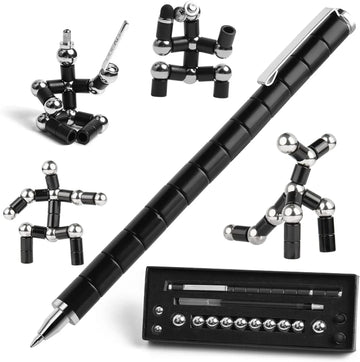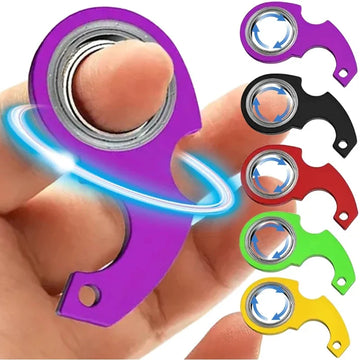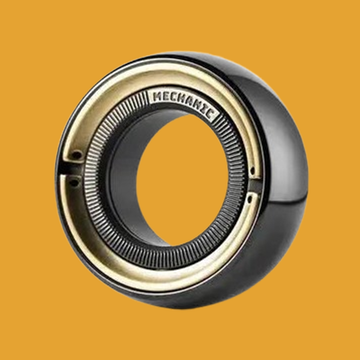In recent years, sensory toys have become more than just tools for children. Their growing popularity in the realm of adult wellness highlights their unique ability to enhance focus, reduce stress, and promote mindfulness. As adults face increasing demands and stressors, these simple yet effective tools have found their way into offices, homes, and even wellness retreats. But what exactly is driving this trend? Let’s delve into the rise of sensory toys and their lasting impact on adult wellness.
What Are Sensory Toys?
Sensory toys are tools designed to engage one or more of the five senses: touch, sight, sound, smell, and taste. They come in various forms, from tactile items like stress balls and textured objects to auditory tools like chimes or white noise machines. Originally developed for children with sensory processing challenges, these toys are now being widely used by adults to manage stress, stay grounded, and improve overall well-being.

Why Are Adults Turning to Sensory Toys?
The rise of sensory toys in adult wellness can be attributed to several key factors:
- Stress Management: In today’s fast-paced world, stress is a constant companion. Sensory toys offer a simple and accessible way to combat stress. By focusing on a repetitive or calming activity, adults can redirect their energy and alleviate feelings of overwhelm.
- Enhanced Focus: Sensory toys help improve concentration by providing a physical outlet for restless energy. This is particularly beneficial in workplaces or environments where maintaining prolonged focus is essential.
- Mindfulness and Grounding: Many adults are turning to mindfulness as a way to stay present and reduce anxiety. Sensory toys serve as tangible reminders to stay grounded, connecting the mind and body through sensory engagement.
- Accessibility and Portability: Unlike many wellness tools, sensory toys are affordable, portable, and easy to use. This makes them an attractive option for individuals seeking stress relief on the go.
The Science Behind Sensory Toys
The effectiveness of sensory toys lies in their ability to engage the brain. Activities involving tactile sensations, repetitive movements, or soothing sounds stimulate the sensory cortex, which helps regulate emotional responses and reduce anxiety. This is why these toys are often used in therapeutic settings to help individuals manage stress, ADHD, or autism spectrum disorders.

For adults, sensory toys can activate the parasympathetic nervous system, also known as the “rest and digest” system. This activation counteracts the “fight or flight” response, promoting relaxation and calmness.
How Sensory Toys Support Mental Health
The connection between sensory toys and mental health is profound. Here are some ways they contribute to emotional and psychological well-being:
-
Anxiety Reduction: Engaging with sensory toys can distract the mind from anxious thoughts, creating a sense of control and stability.
-
Coping Mechanisms: Sensory toys can serve as non-verbal tools for coping with difficult emotions, offering a safe way to release tension or frustration.
-
Improved Sleep: Some sensory toys, like weighted blankets or soothing sound machines, can aid in improving sleep quality by calming the nervous system before bedtime.
The Workplace Wellness Revolution
Sensory toys are increasingly making their way into professional settings. Employers are recognizing their potential to reduce workplace stress and improve productivity. From stress-relief corners to desk-friendly fidget tools, these items are becoming staples in corporate wellness programs.

Providing sensory toys in the workplace fosters a culture of mindfulness and well-being. Employees who feel supported in managing their stress are more likely to be engaged, creative, and productive.
Sensory Toys and Social Connection
Another reason for the popularity of sensory toys is their ability to facilitate social connection. Many adults use these tools as icebreakers or conversation starters in social settings. Sharing the benefits of sensory toys with friends or colleagues can also create a sense of community and shared experience.
Are Sensory Toys a Passing Trend?
While some might view sensory toys as a fad, their deep-rooted benefits suggest otherwise. As awareness around mental health and self-care continues to grow, the use of sensory tools is likely to remain a vital part of adult wellness practices. Their versatility and effectiveness ensure they will continue to evolve alongside other wellness innovations.
Integrating Sensory Toys Into Daily Life
Incorporating sensory toys into your routine is simple. Here are a few ideas:
-
Keep a small fidget tool at your desk to help focus during work.
-
Use tactile items like stress balls during breaks to relieve tension.
-
Explore auditory sensory toys, such as calming sound machines, to create a soothing environment at home.
-
Integrate sensory tools into mindfulness practices, such as meditation or yoga.
The Future of Sensory Toys in Wellness
As we navigate increasingly complex lifestyles, sensory toys offer a unique blend of simplicity and functionality. They bridge the gap between play and purpose, reminding us that small actions can lead to significant improvements in our well-being.
The rise of sensory toys in adult wellness is not just a trend—it’s a reflection of our growing need for tools that help us manage stress, improve focus, and stay connected to the present moment. By embracing sensory toys, we take a step toward a more mindful, balanced, and fulfilling life.





